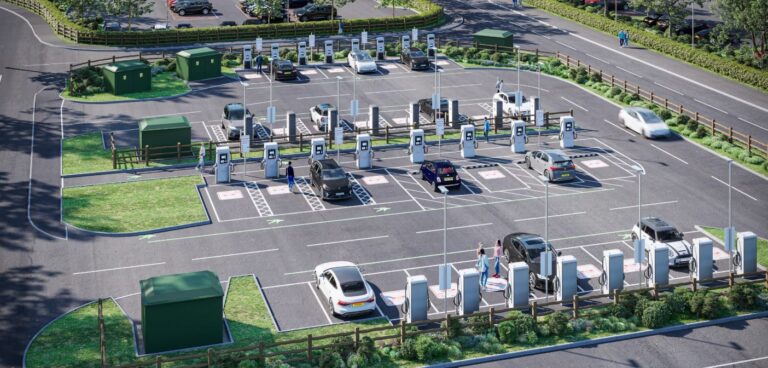UK-based electric vehicle (EV) charging network, InstaVolt, has announced plans to double the number of chargers at its ultra-rapid EV charging hub in Banbury, Oxfordshire.
The expansion of the site will reportedly see 16 new 120kW rapid chargers installed in addition to the existing set of 16 rapid chargers.
InstaVolt says this will take the total number of chargers to 32, affording a greater number of drivers access to rapid charge points along one of the UK’s busiest motorways.
The charging firm has said that it hopes to cause minimum disruption to the current site during installation works and that the new chargers are expected to be ready for public use from spring 2023.
In order to comply with accessibility standards for chargepoints, the site extension will include the provision of four wider access bays and four fully accessible bays, which will feature the required 1.2m (3.9ft) distancing both in front of and in between the charging stations.
Currently, the company is working towards a target of 10,000 rapid EV chargers by 2032 and claims to have already grown its network by nearly 50% in the last 12 months.
What’s more, it claims that this announcement aligns with wider company ambitions to improve the provision of affordable and accessible charging infrastructure across the UK and Europe.
Adrian Keen, CEO of InstaVolt, said: “The number of EVs on the road is up year on year, with recent figures showing the ratio of EVs to charge points now sits at 15:1.
“While this figure is impressive and shows that EV uptake is far from stalling, it also demonstrates that work still needs to be done to ensure the charging infrastructure keeps up with demand.
“InstaVolt is building rapid EV chargers to meet consumers’ needs and as a company, we go further than just installing charge points – we want to be industry leaders and ensure we’re building chargers that everyone can use.
“By expanding our existing Banbury hub to include fully accessible charge points, we’re demonstrating our commitment to improving the industry’s accessibility issues, where we are able to do so.”





